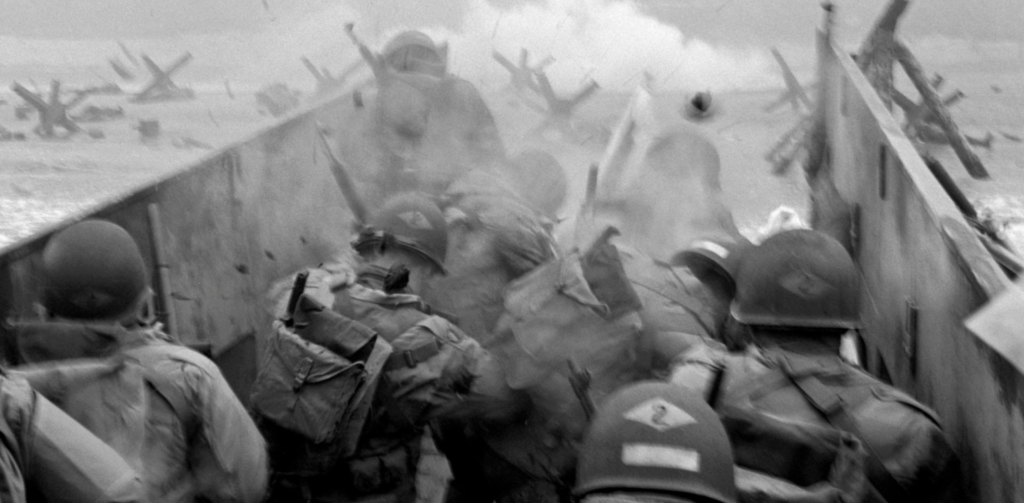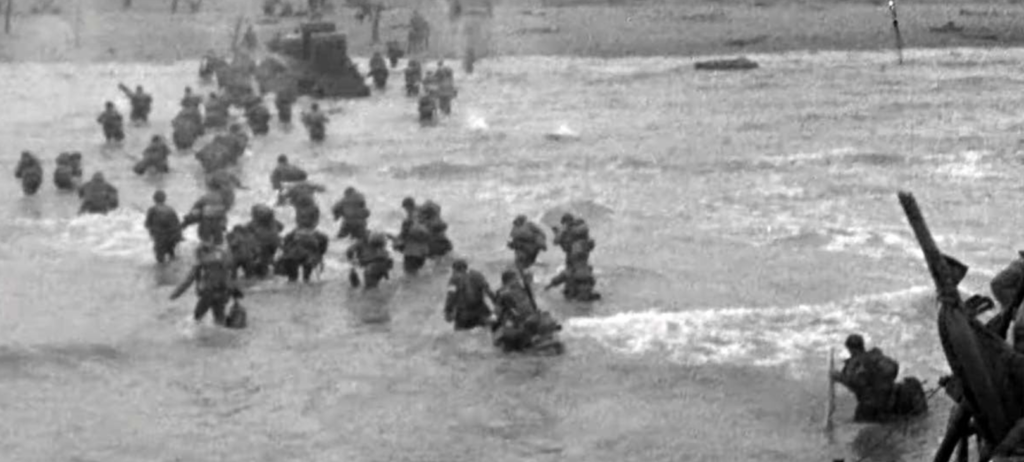I don’t think I could ever have more respect for anyone than I do for the men who made up the first wave hitting Omaha Beach in the Normandy invasion on June 6, 1944.
When they went ashore at 0630. they had to know their life span was measured in minutes rather than years. Indeed, casualties at Omaha in the first wave exceeded 90 percent.
The first time I ever really grasped the horror visually was in 1998 when I saw “Saving Private Ryan.” It was a media/celebrity showing and the first 15 minutes or so showed the first-wave landing in extreme graphic detail. It’s the time I can ever remember watching a film and hearing people gasping and saying “Oh my God!” at what they saw on the screen.

One of the first shots in the movie is of a Higgins boat lowering its ramp and machine guns wiping out the soldiers inside before they could even make it out of the boat.
The shot that affected me the most was the soldier who had his arm shot off. He searched desperately for it, and right after finding it he was shot in the head and killed.
When we consider days like June 6th or the other bloodiest battles in Europe and in the Pacific, it’s almost stunning to realize that of the 16 million Americans who served between 1941-45, only about 4 percent were killed or wounded. Even on D-Day only about 6,500 were killed, wounded or missing.
It pales next to September 17th, 1862, a date all but forgotten or unknown compared to 6-6-44.
That was the bloodiest day in American history, a day when 22,717 men were killed, wounded or missing in the battle of Antietam in Maryland. Of course that included both the U.S. forces and the traitorous Confederates, but even so, it was horrific.

This painting is obviously an artist’s rendering, but the closeness of the forces shows one reason it was such a bloody day.
Even so, I don’t know if many people went into the battle knowing they would die.
The first wave hitting Omaha Beach?
They had to know, and that’s what makes them worthy of our respect. We have a tendency to say “Thank you for your service” to anyone who ever put on a uniform, although many of them never got anywhere near a life-threatening situation.
That’s all well and good.
But I think it’s far more meaningful on both sides to say more where more is appropriate.
“Thank you for your sacrifice.”
Or in cases like Omaha Beach and the first wave …
“Your sacrifice fills me with awe.”

